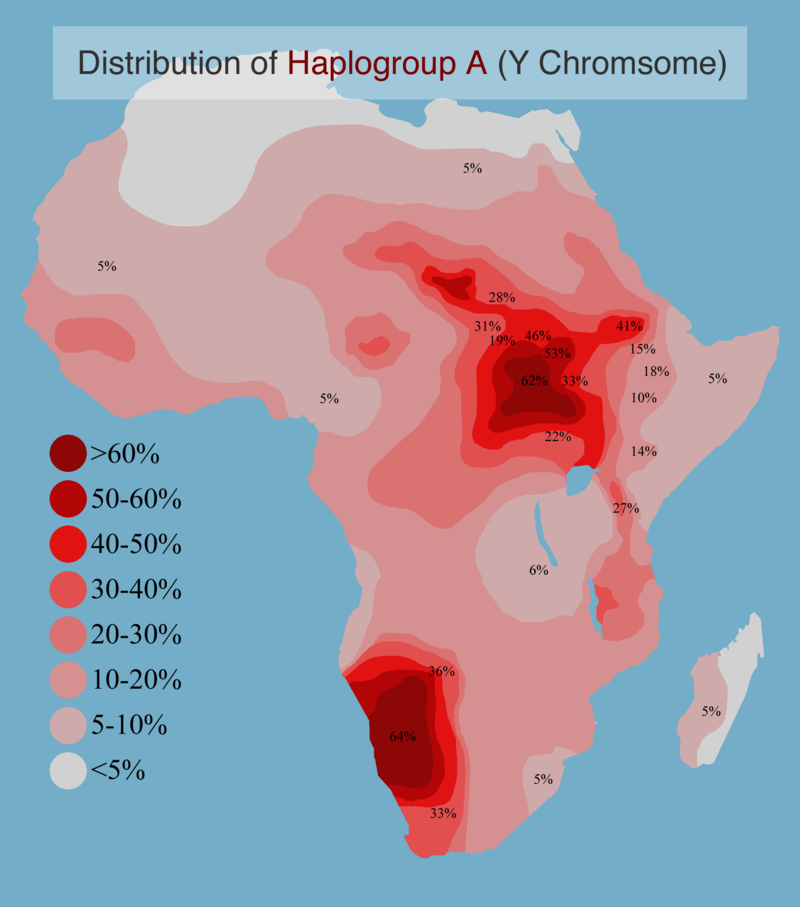|
|
Post by Διαμονδ on Mar 12, 2018 9:54:00 GMT
 Haplogroup A is a human Y-chromosome DNA haplogroup. Unlike other Y-DNA clades, it is not defined by a specific mutation. It is the foundational haplogroup to all known patrilineal lineages carried by modern humans, and thus is the Y-chromosomal Adam. Haplogroup A is a human Y-chromosome DNA haplogroup. Unlike other Y-DNA clades, it is not defined by a specific mutation. It is the foundational haplogroup to all known patrilineal lineages carried by modern humans, and thus is the Y-chromosomal Adam.
Formerly also known as "clade I", bearers of extant sub-clades of haplogroup A are entirely found in Africa (or among descendants of recently extracted African populations), in contrast with the descendant haplogroup BT (clade II-X) bearers of which participated in the Out of Africa migration of anatomically modern humans.
The most basal subclades of haplogroup A are, by age of divergence, "A00", "A0", "A1" (also "A1a-T") and "A2-T". Haplogroup BT, ancestral to all non-African haplogroups, is a subclade of A2-T.Distribution:By the definition of haplogroup A as "non-BT", it is largely restricted to Africa, though a handful of bearers have been reported in Europe and Western Asia.
The clade achieves its highest modern frequencies in the Bushmen hunter-gatherer populations of Southern Africa, followed closely by many Nilotic groups in Eastern Africa. However, haplogroup A's oldest sub-clades are exclusively found in Central-Northwest Africa, where it (and by extension the patrilinear ancestor of modern humans) is believed to have originated. Estimates of its time depth have varied greatly, at either close to 190 kya or close to 140 kya in separate 2013 studies, and with the inclusion of the previously unknown "A00" haplogroup to about 270 kya in 2015 studies.
The clade has also been observed at notable frequencies in certain populations in Ethiopia, as well as some Pygmy groups in Central Africa, and less commonly Niger–Congo speakers, who largely belong to the E1b1a clade. Haplogroup E in general is believed to have originated in Northeast Africa,and was later introduced to West Africa from where it spread around 5,000 years ago to Central, Southern and Southeastern Africa with the Bantu expansion.According to Wood et al. (2005) and Rosa et al. (2007), such relatively recent population movements from West Africa changed the pre-existing population Y chromosomal diversity in Central, Southern and Southeastern Africa, replacing the previous haplogroups in these areas with the now dominant E1b1a lineages. Traces of ancestral inhabitants, however, can be observed today in these regions via the presence of the Y DNA haplogroups A-M91 and B-M60 that are common in certain relict populations, such as the Mbuti Pygmies and the Khoisan. |
|